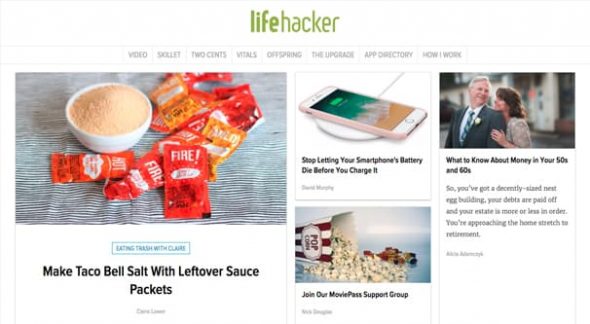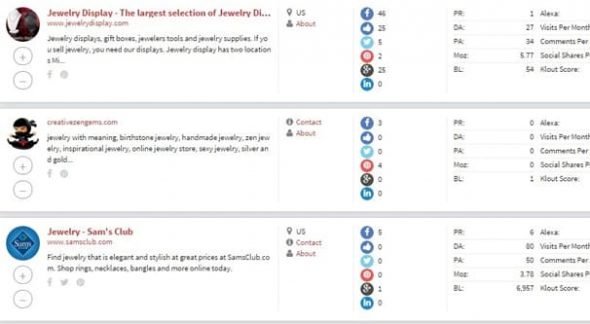When you’re starting a business, launching a product, or looking to make a splash with your event, the number one thing you need is coverage. All marketing, all setup, all planning, it comes down to getting coverage in the press. The more sites and publications that write about you, the more likely you are to get further, better coverage and more awareness to make your launch a success.
So how do you get that coverage? If you want to be covered in a big news organization or large blog, you need to start small. You can’t just pitch Forbes as a newcomer with nothing to your name, there’s no way they’ll do anything other than ignore you. If you have coverage in a bunch of lesser blogs, however, there’s a buzz. When you generate that buzz, you get coverage, it’s as simple as that. So how do you get coverage in those blogs? That’s what I’m here to help with.
Step 1: Choose Your Targets
The first and perhaps one of the most important parts of any sort of blogger outreach is picking the right targets. When you’re promoting a new startup, this selection is critical. You want to cast a wide net, but you don’t want to make each blogger feel as though you’re just sending out a form letter. You want sites that are high quality enough to be worthwhile, but not so full of themselves that you’d have no shot at coverage. In fact, let’s itemize a list.
Your candidates should be:
- A site with high quality writing and noteworthy authors. You don’t want a no-name site someone threw up on a WordPress.com domain with no authority.
- A site with enough traffic to help generate buzz. An old site with no traffic or a new site with no growth might be willing to cover you, but who is going to care?
- A site with low enough of a barrier to entry that they’ll cover a new startup. Big name sites like Forbes, HuffPost, VentureBeat, and WaPo aren’t likely to cover some random newcomer without sufficient incentive.
- A site that’s within your niche. If you’re a musician looking to get coverage for your debut EDM album, you’re pretty unlikely to get coverage on a country music blog and even less likely to get a mention in a plumbing blog.
In addition to the above, you can increase your chances if you check a few of these optional boxes:
- A site with an author who has connections. Many authors write for a variety of different sites in their niche; if you can get coverage from one author on one site, they might be willing to help you out on another as well.
- A site with which you have connections. If you happen to know the author – or have a friend of a friend who knows the author, or can otherwise get a recommendation in – you have a much greater chance of them taking notice.
If you’re not sure where to start, give posts like this one a look. You can dig through Google search results to find relevant to your industry. You can also look up lists like this one that can get you started, though it’s possible that they’ll recommend sites that wouldn’t give you the time of day without some kind of clout. One trick I like to use is look for similar startups and see where they got coverage, and pitch those sites.
Step 2: Research Your Writers
In the first step, you’re meant to build as large a list of potential targets as possible. In this step, I recommend starting up a spreadsheet to keep all of your outreach data in one place. In the first column, list the name of each site. Start a second column, and list each author for that site. Some sites will only have one author or editor in your niche, while others might have several authors focused on the same general topic. Feel free to write them all down so you can start filtering them later.
Now it’s time to gather information about each writer. There are a lot of pieces of information that can be useful to you. Here’s a good idea of what you might want to gather and record:
- Does the site have an official submission process, and if so, does it have a specific email or form to submit?
- What are the social media profiles for the author? Ideally you want to find Facebook, Twitter, and LinkedIn. Certain niches might want Pinterest, Instagram, or even Google Plus. Don’t be too stalkery about it though; if they only have a personal Facebook, don’t try to dig into it.
- Do the authors have specific methods of contact they prefer for pitches? If so, write them down too.
- Is the author still active? I’ve seen cases where people sent in pitches for an author who hasn’t written anything new for the site since 2013. You can bet they probably won’t be covering your startup, eh?
- Is the author the one making decisions? You can pitch an author even if the decision is made by the head editor, but it might be a better idea to pitch directly to the editor first.
You’ll come across some information that will eliminate a few sites from consideration, and that’s fine. You might also find authors who write for sites you didn’t know about, and will be able to add more to your list. Make changes as necessary; this spreadsheet is a living document.
Step 3: Start Outreach
Once you’re ready to start, it’s time to get some basic outreach going. Follow your writers and editors on social media and start connecting with them. Retweet their content, comment on posts they make, share their posts, and generally start being active in their mentions so they get to recognize your name and face. At this point you’ll probably just be one of hundreds or thousands, but that’s fine. This is just a place to get started.
At this point you want to make sure you have all your ducks in a row. Make sure you have a website set up, even if it just has a countdown and a blog. Get a couple of blog posts up with some basic information, an About Us page, and other essential pages. Anything that isn’t to-be-disclosed or prerelease information, that an author might want to know about, should be made available.
You should also consider having a “contact us if you want to cover us” page. This will allow other writers to contact you. You’ll get a lot of pitches from people you don’t care about, but feel free to accept them into the roster. Simply put their sites on a day or three delay, so the sites you care about get first dibs on coverage.
Step 4: Submit a Press Release
Steps four and five can be run concurrently or one after the other, depending on which you prefer. Some sites and some authors will prefer one method over the other, and if you happen to have found that information, you can take advantage of it.
Submitting a press release has a few advantages. All you need to do is draft up a press release with a few customizable fields and send the same basic thing to as many authors as you want. A press release with a press kit allows authors to create their own coverage, and leads to deeper coverage than a guest post could.
On the other hand, a press release is more likely to be ignored as a form submission because it’s harder to create a specific, narrow, customized press release. You can do it, and you should, but it’s easier for a release to be ignored and you should be aware of that risk.
I recommend looking up press releases for similar startups in the past to see what you might be able to do. Often these are published somewhere on a press release aggregator and you can use them as a place to start.
Step 5: Pitch a Guest Post
If a site doesn’t accept press releases, or if you don’t want to send out impersonal press releases, or if you want to have more total control over your mentions, or if a press release was accepted and you think the site will be amenable to following up with something more, you can submit a guest post.
A guest post is basically just an on-topic, unique blog post that happens to mention your new startup. I recommend following a fairly tried-and-true formula for the post. Start with addressing the problem your company is looking to solve. Talk about the problem, some of the ramifications of not addressing the problem, and some possible hard-work solutions to the problem. If there are other competing tools or solutions, consider mentioning them and focusing on the problems with those methods or solutions. Then finish up the guest post with an announcement of your startup and how you’re going to be solving the problem in a revolutionary way. Expound upon the virtues of your startup.
Obviously, you don’t want to be quite that transparent about it in your pitch. Send a pitch that mentions a common problem the target’s audience faces and how you have a new product to solve it. You can even offer to make it a sponsored post if you have a bit of budget to do so.
You can make your pitch more relevant to a specific blog by mentioning a recent post they wrote covering the problem and how you were unsatisfied with the solutions on offer, or otherwise piggybacking off of content they recently published. You might also consider taking a controversial stance, so long as you make sure to avoid crossing over against some other stance the blog usually espouses. Likewise, if you can capitalize on an ongoing trend, do so.
Step 6: Follow Up on Ignores and Mentions
There are three potential outcomes of both a press release and a guest post pitch. The first is an acceptance, where they then either take your information and run with it, or work with you to create something for their site. If this happens, you’re in the money! That kind of acceptance is a great start, and if you can get coverage on a dozen or so different blogs, you’re almost certainly going to be picked up by other sites that wouldn’t have known about you before. You can even use it as an opportunity to reach out to other higher tier blogs you wouldn’t have had a chance with before.
The second possible outcome is a denial. Plenty of sites will refuse to accept guest posts or press releases for one reason or another. Sometimes they simply prefer your competitor or have a sponsorship relationship they don’t want to violate. In other cases they simply feel you aren’t worth covering. They might change their tune later if you get coverage elsewhere, but a rejection is a rejection.
The third outcome is being ignored. If a few days to a week pass and you haven’t heard back, send a follow-up message to the contact portal for the blog. You can also consider a direct message on social media or a direct email to an author you reached out to. It’s possible that your pitch got lost in the shuffle or was filtered and they can dig it out. It’s also possible they’re working on something and simply forgot to notify you. A gentle prod can help solidify this option into one of the first two.
Step 7: Maintain Your New Relationship
Don’t forget that a success is not the end goal. Once you’ve been mentioned, you’ve started up a new relationship. This new relationship can be carried forward with new pitches every month or two, to maintain contact. You can even just leave it at consistent engagement on social media until either side needs something the other can offer. It’s up to you where you take it, but the key is to avoid abandoning these formative moments in a new relationship. You never know how far a good blog can take you.
 ContentPowered.com
ContentPowered.com










